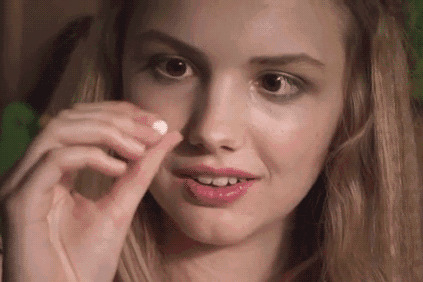In recent years, MDMA had begun to feel like something of a relic. In the midst of the pandemic, dissociative (and ‘unsociable’) drugs – like ketamine and psychedelics – boomed in popularity, while with festivals and clubs temporarily shuttered, the use of party drugs like cocaine and ecstasy nosedived. Even after the lockdown era lifted, it seemed like young people were happy to stick to drugs which offered them a break from the Real World, with more 16- to 25-year-olds claiming to use substances to “escape problems in their lives”. Elsewhere, others had decided to eschew partying entirely in the name of wellness, swapping days-long comedowns for wholesome weekends spent exercising and drinking green juice. MDMA, it seemed, was over.
But drug trends are cyclical, and official figures suggest that MDMA is back. According to the government’s wastewater analysis, which takes samples from wastewater treatment plants and measures the levels of illicit drugs, MDMA use increased by more than 50 per cent in the January to April 2024 period compared with the same period a year prior. Urban areas reported the highest traces, suggesting young adults in cities are driving the trend. Plus, wastewater analysis is actually much more accurate than self-reported surveys, such as the government’s Crime Survey for England and Wales, which should always be taken with a pinch of salt (because, understandably, people can be reluctant to be honest about whether they take drugs or not).
Lorde is making me want to try mdma omg
— »»» (@lordezeitgeist) May 22, 2025
Many factors could contribute to a rise in MDMA use, such as its therapeutic benefits, which have been actively championed by big names like Lorde, or the fact that live music events, clubbing and festivals are back to business as usual post-pandemic. Josh Torrance, a researcher at the University of Bristol, suspects the main driver is likely the price. For around 18 months in 2022 and 2023, Torrance collected drug market data online. “For the entire time I was collecting data, a kilogram of MDMA was £5,000,” he tells Dazed. Now, he says, a kilogram costs £3,000. “It’s not quite halved, but it’s significantly cheaper than it was two years ago, and I think that will be reflected in the average price of a pill.”
Dan, 27, takes MDMA a few times a year, mainly at festivals and electronic music events. Although he says he uses it less and less as he gets older, he has noticed a significant price decrease. Currently, he can get nearly two grams for £30, making it about half the price it was for him a couple of years ago. Pills, meanwhile, cost as little as £5 each, or less when bought in multiples. Anna, 27, agrees that MDMA is much cheaper now. “I can get a gram for £20, whereas it used to cost £30 to £40.” On top of that, she adds, it’s stronger than ever. “It’s the strongest I’ve ever had,” she says. “It seems twice as strong as usual!” This chimes with the findings of drug testing charity The Loop, which found that the strength of MDMA pills has risen again in 2024, with an average strength of 192mg.
I do it for the euphoria. It’s an experience unlike any other drink or drug
All this is set against a backdrop of rising prices. The average price of a pint of beer has risen sharply since the pandemic, and it’s no secret the young people can no longer afford to go out as much as their millennial counterparts could. In fact, one study found that 68 per cent of the young people surveyed said that they had stopped going out so much as a result of the current economic climate. “Especially now, people’s behaviours are often driven by affordability,” says Torrance. “It’s very difficult to afford tickets to things and enough drinks to get you drunk all night, but it’s much cheaper to buy MDMA or pills.”
Then there’s the fact that electronic music has gone mainstream. Ecstasy and rave culture have been intertwined since the emergence of the acid house scene in the late 1980s and since the 2000s, this culture has been increasingly co-opted and commercialised by businesses looking to sell tickets to events centred around dance music (and largely divorced from the scene’s underground, radical roots). Today, electronic music is more popular than underground; according to the Night Time Industries Association’s UK Electronic Music Report for 2024, electronic music contributed some £2.4 billion to the UK economy in 2024. One consequence of this is that more people are interested in taking MDMA at these kinds of events: it’s no surprise that everyone I spoke to for this article said they use MDMA at electronic music events and festivals.
While, as Torrance notes, affordability and availability may boost the prevalence of a specific drug at any given moment, the reality is that ever since MDMA arrived on the shores of the UK’s first rave scene, it’s never really gone anywhere — and probably never will. For people like Dan and Anna, MDMA is baked into their personal clubbing culture. “To an extent, it’s just what we’ve always done, so I’m still doing it even if the amount is a lot less now than in my late teens and early 20s,” says Dan. “I do it for the euphoria. It’s an experience unlike any other drink or drug,” he adds. Or, as 26-year-old Charlie puts it: “It’s called ecstasy for a reason”.



